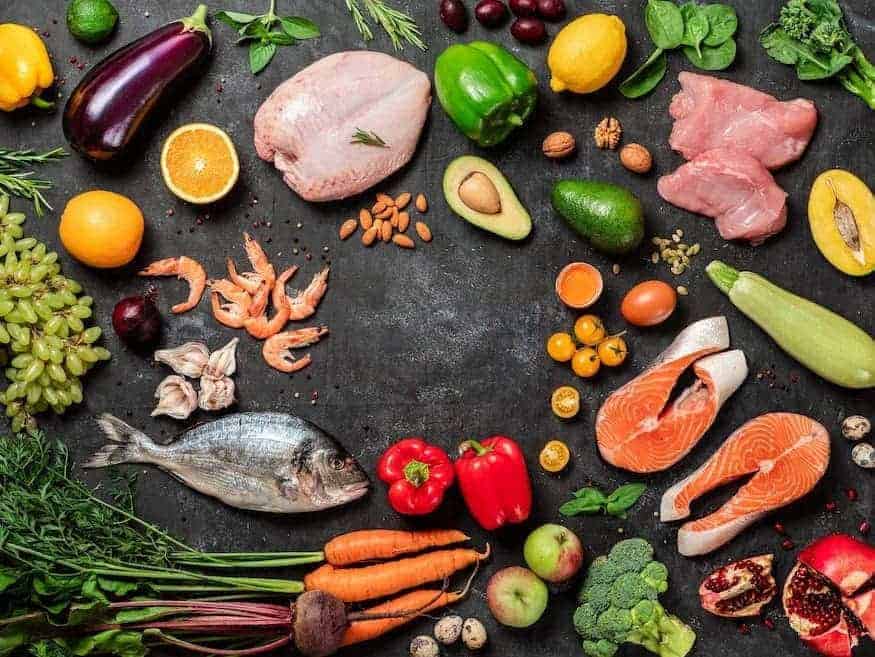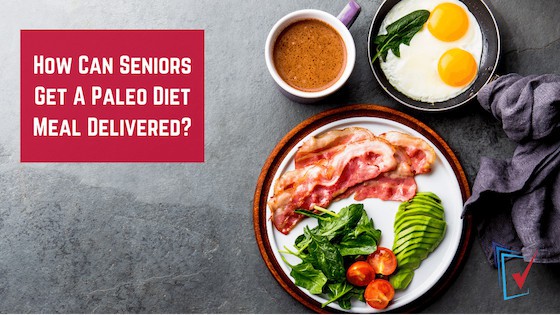What is the Paleo Diet?
The Paleo diet is a healthy diet plan that offers a clean diet restricting preservatives, additives, or dangerous chemicals.
You may address issues you are having by enjoying the benefits of anti-inflammatory nutrients in oils, seeds, nuts, and vegetables. Red meat guarantees a steady intake of iron.
Using meal delivery services have their benefits, they can eliminate cooking and save you trips to the grocery store. These services will allow you to eat fresh and organic meals that we curate, and the ingredients are proven to satisfy. Choosing to use a
If you were to buy all the ingredients to eat on a Paleo diet, it could get expensive. There are a few ways to save money when you switch diets. Use these tricks to make your groceries stretch.
The meal delivery services have relationships with the food vendors due to volume business, enabling them to offer lower prices, so you'll save time and money.
How Do Compare Paleo Meal Delivery Services?
These services can be incredibly convenient if your goal is to stay independent and age-at-home.
A meal delivery service can become a great meal planning alternative making it easy to source nutritional meals designed to suit your personal needs and preferences.
You can find your favorite ready-to-eat Paleo dishes from their expansive menus and customize your delivery.
Seniors and their caregivers have peace of mind knowing that the shopping, prepping and measuring of ingredients, even preparing the meals themselves have been taken care of

All the top-ranked companies on our list have their kitchens run by professionals with experienced chefs. They create delicious and unique recipes, even prep, cook fresh meals for you, and send them to your home.
How Do You Choose The Right Paleo Meal Delivery Service?
Our goal of creating this round-up was to consolidate the overwhelming abundance of meal delivery options for seniors into an easy-to-research buyers guide. Our team of researchers has years of sampling and reviewing meal delivery services.
If you were to try out every single meal delivery on the market, it would be a long process and could get expensive and frustrating.
To make it easier for you, we've narrowed down the available services and written honest reviews about their offers and let you know what or what not to expect.
When we choose to list meal delivery services, we pay close attention to the aging-adult needs and what would be relevant for seniors and caregivers alike.
We check out what every meal delivery service has to offer, including their menu and customer reviews. We determine if the service makes sense for seniors. Meaning we chose companies that offer vegetarian, vegan, gluten-free, for, and Paleo options.
Our research process saves you time by giving you the ability to customize your order to your diet by avoiding the ingredients you are allergic to or dislike.
Variety is something to consider when choosing a meal delivery service. Some services offer limited menus that rarely change. The customer favorites are services that have rotating menus that introduce new meals weekly. Keep this in mind since you'll have the opportunity to try lots of different meals.
We also consider the nutritional value of the meals. It's also essential that the meals have flavor and taste good. You or your loved one won't stand to eat them, ensuring that the optimal amount of necessary nutrients are in the meals.
Finally, we rate the services based on prices and flexibility. The meals need to be affordable for Senior Affair to recommend the service.
We report any hidden costs, including shipping costs or additional fees, and are flexible in terms of subscriptions.
Best Paleo Meal Delivery Services for Seniors
What do our top picks have in common? They are currently the best on the market. It's time for you to discover what makes each Paleo meal delivery service unique.
The Myth's about the Paleo Diet and Aging
There's no truth to the accusation that a Paleo diet will make you drop dead. Switching to a Paleo diet as you age should prevent your body from going through a significant physical deterioration from continuing to eat like a 25-year old. Meaning the older we get, the more critical it is that we eat well.
This evolutionary theory explains that aging adults are even more vulnerable to risk from toxins in everyday foods.
Because they aren't of reproductive age anymore, they often lose the ability to digest milk after childhood (we don't need this anymore). Our aging bodily system can “turn off” particular digestive adaptations that younger people use to survive on a sub-optimal diet.
Diet and Aging – Micronutrients
One of the first ways the Paleo diet is beneficial is that it delivers many nutrients per calorie.
We lose muscle mass as we age, and the number of calories needed to survive drops also. Medically this is called the basal metabolic rate. Basal Metabolic Rate is the number of calories required to keep your body functioning at rest. BMR is also known as your body's metabolism; therefore, any increase in your metabolic weight, such as exercise, will increase your BMR. You can calculate your BMR here.
Older people need less energy but the same amount of nutrients as younger people. You can preserve some muscle mass with exercise, but metabolic slow down will happen whether we like it or not.
It would be best to pursue a nutrient-dense diet as you age and don't waste calories by consuming foods with low nutritional value. The main culprit would be sugar, and many of the so-called heart-healthy whole grains count too. The nutrients in these foods aren't bioavailable and are bound up.
Sadly, many seniors enjoy what some consider “old people's food,” including bland, sugar-filled, and nutrient-poor carbs.
They fill their diet with mac and cheese, white bread, boiled peas, vanilla pudding, jello, or pudding.
Reducing or cutting these empty calories and replacing them with more nutrient-dense whole foods could help prevent a host of dangerous complications.
Older men and post-menopausal women are osteoporosis, which is the gradual reduction of bone density that could leave you at risk for mobility-limiting fractures.
The standard response to osteoporosis is to get more calcium by eating more dairy products.
However, eating more dairy doesn't work since the US has the highest dairy intake and has exceptionally high osteoporosis rates. In contrast, countries with lower dairy intakes (like Japan) have lower rates.
Even consuming lots of calcium-rich non-dairy foods like seaweed won't complete your diet. Something is missing.
Something happens to be essential vitamins you need, Vitamin D and Magnesium; what do you know about them?
You can't get calcium without having a diet rich in the necessary micronutrients and low in toxins that prevent absorption. To get this done, Paleo is the perfect diet.
Some other nutrient deficiencies common with aging adults are Vitamin B12 deficiency that is a significant contributor to dementia and other brain-health diseases. An iron deficiency often causes brain fog and fatigue. Consuming high-quality animal products that are the nutritional core of Paleo are excellent sources of these nutrients.
Not detail the many potential nutritional deficiencies from surviving on a diet of mashed potatoes and prunes would do.
It's easier to explain that the Paleo diet has addressed the aging community's needs. The traditional American diet has failed.
Paleo provides high levels of all the essential nutrients needed with few or no empty calories.
To simplify, as we get older, we need the same amount of nutrients, but we need to get them in our system more efficiently and with less food overall.
Diet and Aging: Insulin, Diabetes, and Ketosis
Paleo is also preferred to the USDA recommended diet because it promotes insulin sensitivity. One of the most common complications happens to be insulin resistance.
Insulin resistance is when your body can no longer properly metabolize carbohydrates and is the precursor to Type 2 diabetes. This problem is more associated with adults over the age of 65, with 27% suffering from diabetes than the rest of the population, only 8%.
The complications from diabetes include kidney disease and loss of vision, and what's more serious? A group of brain-health diseases like the all-feared Alzheimer's disease slowly but surely causes increasing memory loss and confusion, marked by a steady brain function loss.
Anyone who has known someone or has taken care of a loved one who has Alzheimer's disease knows how painful this can be for the patient and their family and friends.
This article in the European Journal of Internal Medicine suggests two main negative nutritional factors that may lead to Alzheimer's disease: consuming excess carbohydrates (especially fructose). The second is a lack of cholesterol (you read that right!).
The correlation between carbs and Alzheimer's is so strong that it's sometimes referred to as Type 3 diabetes.
The researchers start by addressing what we already know. When you age, your sensitivity to insulin decreases, and insulin is attributed to forming memories so that a high-carb diet could be the reason for this alone. People with low serum cholesterol levels have higher neurodegenerative diseases like Alzheimer's, Parkinson's Disease, and dementia.
But it's not so simple that you decide to eat more cholesterol. The problem is with digestion and the use of the cholesterol that you do get.
In this study, researchers found that fructose consumption promotes the formation of advanced glycation end-products (AGEs), which prevents the brain from using LDL cholesterol properly.
They would suggest that seniors' ideal diet would promote insulin sensitivity and good cholesterol in the brain.
One of the significant contributors to AGE's forming is oxidative stress. A keto diet helps protect against this because it reduces carbs intake to levels that won't cause insulin resistance.
There aren't too many human studies on ketosis and aging, but the ones that exist like this prove that fact using a test group with “mild cognitive impairment” for six weeks.
They gave the group members a high carb (50% carbs) or a low carb ketogenic diet (5-10% carbs) diet, and they did not restrict the total calories in either group.
The ketogenic group improved in every tested marker, including verbal memory, weight, waist circumference, fasting glucose, and fasting insulin. This study with Parkinson's Disease patients shows a benefit as well.
The USDA suggests we consume a high-carb diet. Still, the studies show that you should pursue a diet that is insulin-sensitizing and rich in fatty animal products, and low in carbohydrates.
For the Paleo diet, consuming coconut oil would be beneficial even on a diet that doesn't cause complete ketosis.
Diet and Aging: Challenges and Solutions
A low-to-moderate carb Paleo diet provides an optimal composition of vital nutrients for healthy aging.
Sometimes physical and social changes associated with aging can be challenges to following a healthy diet even when someone knows what they should be eating.
Some challenges specific to older adults can range from having painful and bad-fitting dentures that may hurt to eat. Some seniors have limited mobility, so making it to the grocery store and shopping is a chore.
Other adults face financial struggles and can't afford high-quality meats and vegetables.
Learning how to cook in new ways at this stage in this life can be stressful. Some older adults lose interest in eating and may lose their appetite.
In general, eating well can be difficult for seniors, but it doesn't have to be impossible. Some ways to help cope with these challenges are:
- Using grocery and meal delivery services that let you shop online, deliver the meals and food straight to your door. Even Amazon is offering these meals.
- Invite friends over to help cook and eat a meal together; you both could help clean up!
- Is chewing vegetables an issue? You should try soups (have you tried sweet potato and lime? Creme of tomato or Butternut squash, or cook your vegetables in soups and stews to make them softer.
- Experiment with new seasonings to keep your food fresh and exciting.


